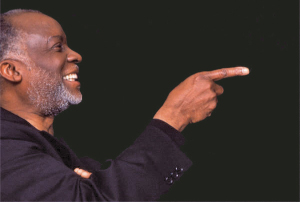
Ahmad Jamal photo: courtesy www.ahmadjamal.com
I had great expectations and I felt drained, even wounded. I wrote about my disappointment in Northside San Francisco. Now, a year later, I want to correct myself and make an admission.
The disappointment I felt was more about me than it was about Ahmad Jamal. He received a standing ovation. More than 3,500 jazz fans in the audience didn’t seem to agree with my assessment.
Jamal’s Monterey Jazz Festival performance was 2010 – the way he plays now. I had him stuck away in a time more than 50 years ago. That was my shortcoming, not his. That doesn’t make me a bad guy, just a moldy fig.
One of my all-time favorite recordings is Ahmad Jamal Live at the Pershing and the Spotlight Club. It was released in 1958. I think it would be accurate to say that since then I have listened to that jazz album and several other Ahmad Jamal albums hundreds of times. I listen in the morning hours, turning the volume loud enough to pick up the interplay among Jamal on piano, Israel Crosby on bass, and Vernell Fournier on drums. Whenever there are guests in my house, I play Ahmad Jamal and his Trio whether those guests want to listen or not. At night in bed I listen to Jamal on my iPod. You could say I’m an Ahmad Jamal kind of guy.
A MILES DAVIS FAVORITE
So what went wrong with me last year at the Monterey Jazz Festival?
Well, allow me to present a little jazz history courtesy of another jazz legend, Miles Davis. The moody jazz trumpet artist once said “… he [Ahmad Jamal] knocked me out with his concept of space, his lightness of touch, his understatement, and the way he phrased notes and chords and passages.”
Miles referred to Jamal’s “melodic understatement.” I think it would be fair to say that to Miles Davis, Ahmad’s Jamal’s silences – the blank spaces that created tension – were as important as the notes he played. Jamal also had (and still has) a highly refined sense of dynamics: short, heavy, staccato chords frequently alternating with soft, ear-straining single notes.
TENSION AND RELEASE
My Ahmad Jamal – the Ahmad Jamal of the 1950s and ’60s – was a master of the extended vamp. He played the same simple, single note piano riff (vamp) until my ears itched. Then just when I thought the tension was almost too much for my delicate psyche, he plunged ahead into something else. He was all about tension and release. And he did much of this with a series of show tune standards like “But Not for Me,” “Dancing Cheek to Cheek,” even that old warhorse “Poinciana.” That’s what turned me on to Ahmad Jamal.
Last year at Monterey, that’s what I expected. Instead Jamal (certainly looking more seasoned now than he did on those early album covers) gave me a different sound. It was the orchestral Jamal. The music was dense, almost smothering, almost symphonic. It crashed on my ears. Too bad, I thought. Ahmad’s lost it. Now I think it was me who lost it.
THE PASSAGE OF TIME
At the risk of sounding like a superior, stuffed shirt jazz critic – they exist out there in Cyberville – I ran across a quote by a Polish poet, Anna Kamienski, that captures Ahmad Jamal perfectly: “Music teaches us the passing of time. It teaches the value of a moment by giving that moment value. And it passes. It’s not afraid to go.” To me that passing of time and time being not afraid to go is what Ahmad Jamal is all about.
So I’m going to give him another chance and go to hear the new Ahmad Jamal at the San Francisco Jazz Festival. Or perhaps I should say Ahmad Jamal is going to give me another chance to shape up.
Ernest Beyl says he wants to shed his designation as a “moldy fig” and suggests he’s not really a jazz fan stuck in time.
E-mail: ernest@northsidesf.com.








